The Tea & Chocolate Place
An unsuspecting journey from the ancient Maya city of Copán to Philly & back
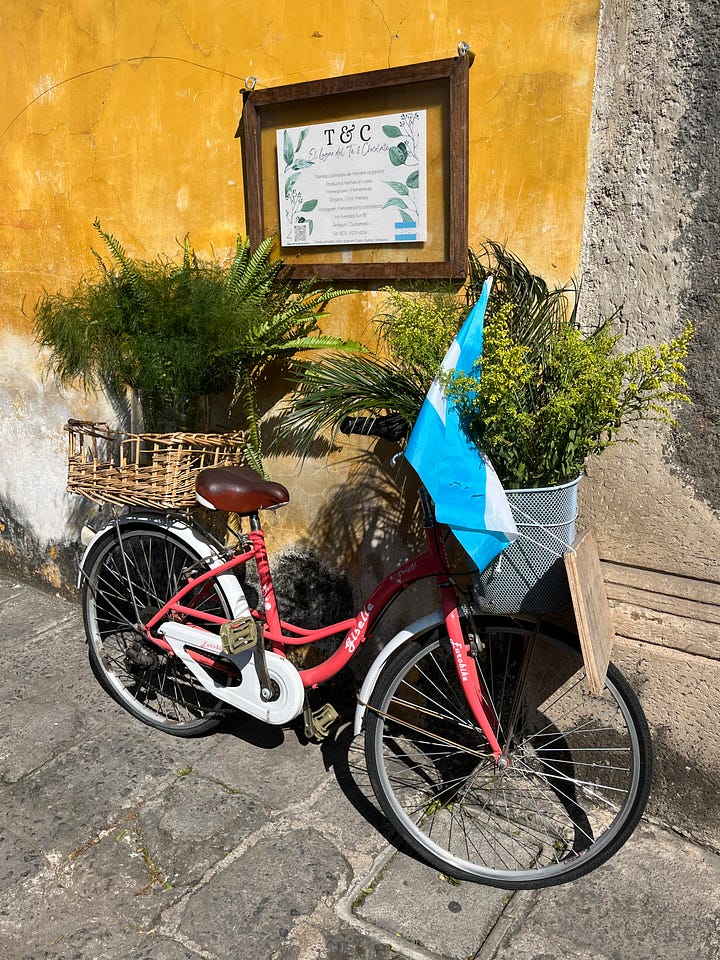

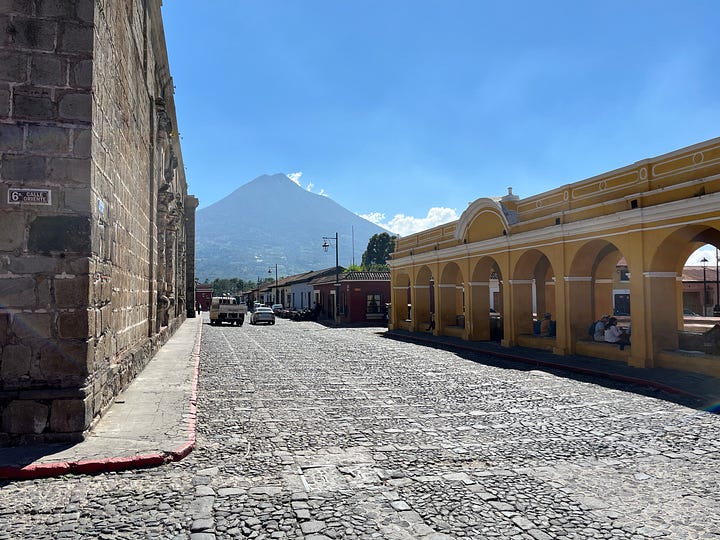

After creative mornings back in Antigua, Guatemala, we’d commonly go for daily hours-long walks in one or other direction, revelling in the colours, arches, cathedrals, those volcanoes, and any number of surprise findings. On one occasion, we chanced upon El Lugar del Té y Chocolate (The Tea and Chocolate Place). Its supply draws from a wonderful story of regeneration, exhibited in brief on their in-store banner, adorned with delicious cacau pods at its base. Where the story led from here still amazes me.
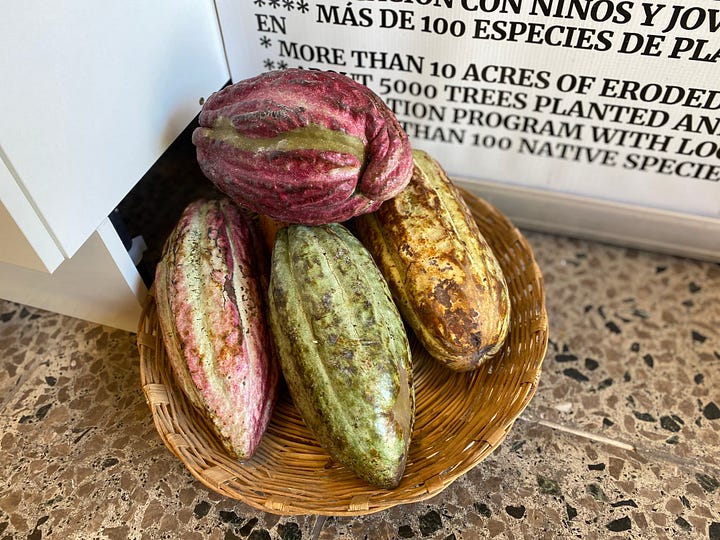
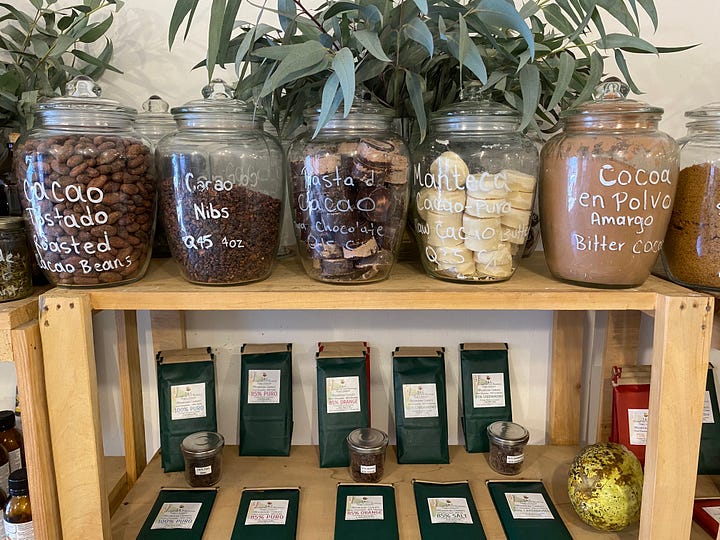
The original and main store (pictured below) is at the site of the regeneration, adjacent to the ruins of the extraordinary ancient Maya city of Copán, just inside the modern-day border of Honduras.

You can hear some of that ancient city’s story here, in a terrific podcast hosted by archaeologist Ed Barnhart, called ArchaeoEd. A friend and listener of The RegenNarration, Kian, told me about it recently. (There are more uncanny aspects to share on that front too, but that’s another story!)
The essentials of this story of regeneration, as they tell it, start in 2003 when:
Archaeologist David Sedat and his family started the Copán 2012 Experimental Botanical Station (or Project 2012, named after the year 2012 which commemorated a new cycle in the ancient Mayan calendar) to regenerate eroded landscapes in Copán Ruinas, Honduras. To date we have reforested over 35 hectares and reintroduced over 100 species of native plants!
The project is described as:
Tropical agro-forestry on steep slopes, farmland regeneration and ecosystems recovery, planting forests of useful trees-sources of food, medicine and biofuel.
On looking into David’s story, I found a 2018 article titled Copán & Chocolate: After Uncovering the Maya World, David Sedat Now Works to Preserve its Cacao Legacy, written by Margaret Shakespeare (of course, a writer). Margaret described David as ‘an admired authority on Maya history and culture’. Ed Barnhart, who I learned from his podcast worked under David, described him as an ‘eccentric lunatic’. And ‘a heck of an archaeologist.’
David, with a team that included Ed, had ‘led investigations at Copán that (re-)discovered ‘the lavish jade-laden tombs of Yax K’uk Mo’ (Green Quetzal Macaw)—Copán’s Classic Maya Period (426-820 AD) royal dynastic founder—and his presumed wife (known as The Lady in Red; her bones were painted with red cinnabar).’

David was accompanied in this work by mentor Professor Sharer, having followed the Professor in his move to the University of Pennsylvania Museum of Archaeology and Anthropology. What? I read this part of Margaret’s article having just arrived in Philadelphia, and driven right by the area where the Museum is located.
We were in Philadelphia for the President’s Day long weekend in mid-February - which, by the way, happened to be the week after the Philadelphia Eagles had walloped the storied Kansas City in the Superbowl, unleashing all kinds of weird and wonderful celebrations.

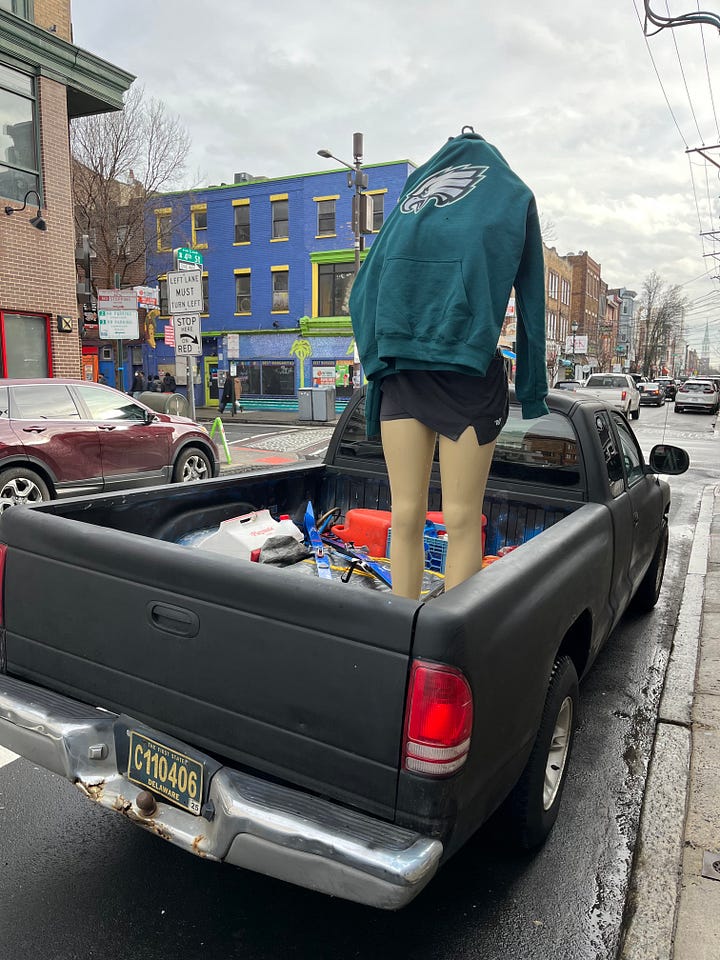
We were visiting with friends Dana and Becca, with whom we’d been staying in Baltimore. And as fate would have it, the last time Dana and I had shared a house together was amongst the Maya. That was during my last year, and his first (as a Peace Corp volunteer), in Fray Bartolomé de las Casas (Fray), in the province of Alta Verapaz, Guatemala, 21 years ago. Here’s a photo of that humble house. I think that’s a shirtless Dana leaning against the bars; it’s hot there.
Soon after Dana returned to the US from Guatemala, he and Becca met and fell in love in West Philly. They returned on this President’s Day weekend with their two children for a reunion with some old grad school mates, and kindly invited us to tag along.
I started writing this piece on the Sunday morning after our arrival, and had just read about David Sedat being based up on the road, when Dana picked us up to head downtown that afternoon. After a few minutes, what building should we drive right by? There’s the Museum.
Over dinner that Sunday night, I learned more about how much Dana and Becca had loved Philly, but left to follow an opportunity Becca turned up in Baltimore back in 2012 - thereby denoting their own experience of ‘the new cycle in the ancient Mayan calendar’.
David Sedat retired from the Museum in 2012 too, and made Copán Ruinas his home. That completed another cycle, in a sense, given David grew up amidst Maya culture. And where was that exactly? Going by a social media profile I found for him, David grew up in Cobán, the capital of Alta Verapaz - the same province Dana and I used to live in.
It was during that time that David had his life-defining epiphany.
Spending his childhood in Guatemala, where his parents served as missionaries and Bible-translators, a 10-year-old Sedat made a flash decision that archaeology would be his career path. He remembers the surprise of walking along a railroad track near the border with Honduras to come upon a stela, rising 26 feet from the jungle floor, the tallest such monument ever erected by the Maya. But a local told him the great city of Copán, even more spectacular, lay close by, just beyond the mountains—tantalizing and captivating information for a youthful, formative imagination. “I made a firm resolve to be a Maya archaeologist when I grew up,” he recalls with gusto and satisfaction.
I learned that while David’s finds at Copán have earned him such renown, he says his experiences back in the 1970s in Alta Verapaz,
“were actually the most surprising…. I had been born into one of the richest and yet least known part of the Maya world. These so-named Northern Maya Highlands, long thought to have been unimportant to the Maya, actually contributed specifically to the rise of Classic Maya civilization—in particular [its] early writing system.”

In 2009, David was recognised as a Purpose Prize fellow. That’s an honor that was originally developed by a US non-profit that has recently come to be called CoGenerate. I only know this having followed the links to their story, and it’s well worth reading, along with those of other award-winners. They say ‘We’re shining a light on powerful examples of cogeneration to change the narrative from generations apart to generations together.’
At the time David won the award, it recognised social entrepreneurs above the age of 60 (it’s housed by a different mob now, and its remit has expanded some). In David’s case, he was awarded for ‘regenerating the steepest, most eroded landscape in Copán, Honduras, and helping combat poverty and nutritional issues in the area.’
The award describes how David:
noticed striking parallels between the problems facing contemporary Copán and those that brought down the region’s ancient Maya civilization: unrestrained population growth; deforestation and erosion of hill slopes; loss of farmland; diminished water resources; and nutritional deficiencies. Sedat thought, “Why is not more being done now to avert the coming catastrophe?”
Project 2012 emerged from this. By the time David received the award, a mere five years after the project was founded, it was said that it turned:
‘20 acres of the steepest, most eroded farmland overlooking the ruins of Copán into an outdoor classroom where individuals, community organizations, and nongovernmental organizations can learn the relatively simple process of land regeneration. Roughly five years later, lush forest covers the land.’
Another sixteen years on, I stood in their Antiguan store and marvelled at the delicious cacau tea, incredible array of chocolate, and their deep roots of regeneration. I also marvelled at how I’m finding these aspects mirrored in so many stories I’ve learned about over the eight years of our travels with the podcast to date. Luscious land, delicious food and deep roots - human and otherwise.
Stemming from that, perhaps what has struck me most about all these stories is the implicit wonder. From what lit up the 10-year-old Sedat’s imagination in Guatemala, to what lit up mine (and Dana’s) there too. Then there’s the fact I had started this story thinking I was just going to tell you more about Antigua and this cool store and project we found, only to find it became a swirling set of connections weaving our apparently distant lives together. You couldn’t script it. But you wouldn’t notice it either, unless a story was told.
I wonder now, as more of us see what David saw, in the ‘striking parallels’ between the problems facing contemporary and ancient societies, what other new cycles we might set in tow? And when it can look, feel and taste as good as El Lugar del Té y Chocolate, why wouldn’t we?
Thanks so much to you first 100 subscribers for joining me here. Especially to you new paid subscribers - Rowena Morrow, Gabrielle Mann (hi sister), and the first Founding Member, Nelson Cheng (onya bro).






